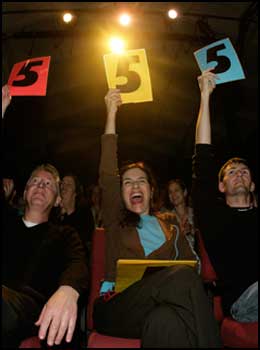I can’t think of an online ad I like. Can you? Online content, sure. Brand supported online content even. But an ad? No. Generally speaking, online advertising is some weak shit. A fact which makes it all the harder to accept that valuable print vehicles are struggling to stay afloat because their lifeblood–print advertising–is migrating online.
Case in point: No Depression, one of the nation’s best music mags is going to stop putting out a print edition. This is a crime against music-loving humanity.

Here’s what’s happening:
The simple answer is that advertising revenue in this issue is 64% of what it was for our March- April issue just two years ago. We expect that number to continue to decline.
The longer answer involves not simply the well-documented and industrywide reduction in print advertising, but the precipitous fall of the music industry. As a niche publication, ND is well insulated from reductions in, say, GM’s print advertising budget; our size meant they weren’t going to buy space in our pages, regardless.
On the other hand, because we’re a niche title we are dependent upon advertisers who have a specific reason to reach our audience. That is: record labels. We, like many of our friends and competitors, are dependent upon advertising from the community we serve.
That community is, as they say, in transition. In this evolving downloadable world, what a record label is and does is all up to question. What is irrefutable is that their advertising budgets are drastically reduced, for reasons we well understand. It seems clear at this point that whatever businesses evolve to replace (or transform) record labels will have much less need to advertise in print.
Okay, if labels aren’t going to run print ads in No Depression, then who is? There’s bound to be a solution somewhere. Maybe some generous trustafarians can underwrite the book. Or some generous rock stars. Or maybe a giant corporation who needs to shower itself in cool juice could underwrite the effort. ND is a Seattle operation. Microsoft could step up and run a bunch of double truck Zune ads.







